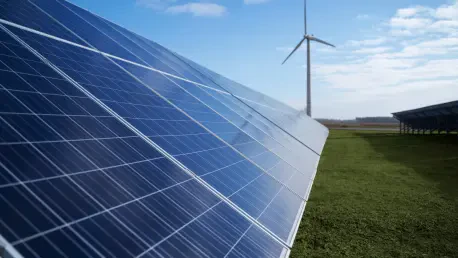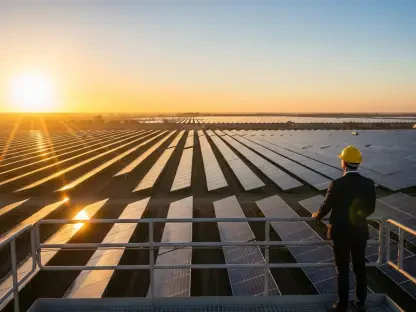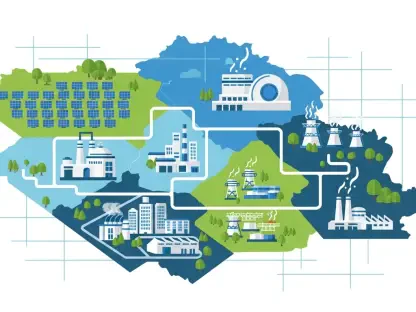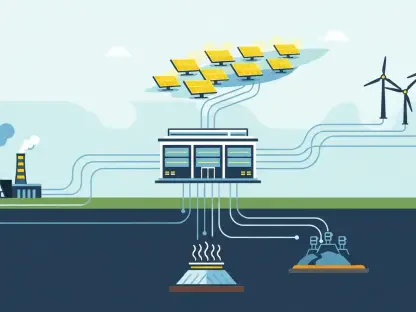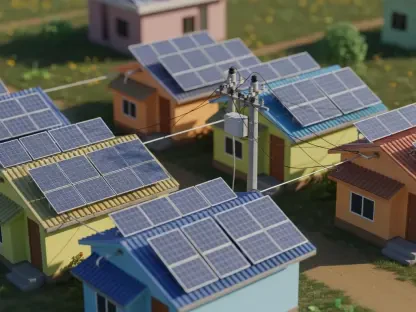I’m thrilled to sit down with Christopher Hailstone, a seasoned expert in energy management and renewable energy, who brings a wealth of knowledge on electricity delivery and grid reliability. With China’s renewable energy sector experiencing unprecedented growth yet facing significant challenges in utilization, Christopher offers critical insights into the complexities of integrating solar and wind power into the national grid. In this interview, we dive into the rising issue of curtailment, the rapid expansion of renewable capacity, regional disparities in energy usage, and the strategies China might adopt to balance growth with efficiency. Let’s explore these pressing topics through his expert lens.
Can you walk us through what curtailment means when we talk about renewable energy, and why it’s becoming such a pressing issue in China?
Certainly, Silvia. Curtailment in the renewable energy context refers to the deliberate reduction of power output from sources like wind and solar by grid managers. This happens when there’s either too much supply compared to demand or when the grid infrastructure can’t handle the incoming power. In China, this is a growing concern because the country has been adding renewable capacity at an astonishing rate, but the grid and storage systems haven’t kept pace. This mismatch leads to wasted potential—energy that could power homes or industries just gets turned away. It’s a problem of balance, and as China pushes for decarbonization, solving curtailment is critical to making the most of these clean energy investments.
How does this rapid increase in curtailment rates, especially with solar jumping from 3.9% to 6.6% and wind from 3% to 5.7% in just a year, reflect the broader challenges China faces?
The spike in curtailment rates for 2025’s first half shows a clear disconnect between capacity growth and system readiness. For solar, that jump to 6.6% likely ties to overbuilding in regions where demand or transmission lines can’t absorb the output. Wind’s rise to 5.7% reflects similar issues, compounded by the fact that wind farms are often in remote areas far from consumption centers. These numbers highlight that while China’s ambition to lead in renewables is commendable, the grid is struggling with integration. It’s not just about building more panels or turbines; it’s about ensuring the energy can actually reach users without overwhelming the system.
With China adding a staggering 268 gigawatts of solar and wind power in just six months, how does this breakneck pace affect their ability to utilize all that energy?
That 268 gigawatts is a mind-blowing figure—almost matching the total wind and solar capacity the U.S. has built over decades. But this speed is a double-edged sword. While it showcases China’s commitment to clean energy, it puts immense pressure on the grid. Transmission lines, storage solutions, and demand forecasting haven’t scaled at the same rate. So, you end up with a surplus of power in some areas that can’t be moved or stored effectively. It’s like pouring water into a bucket with holes—some of it just spills out as curtailed energy. This rapid deployment needs to be matched with equally aggressive infrastructure upgrades to avoid diminishing returns.
Why are certain regions like Tibet and Qinghai facing much higher curtailment rates compared to the national average, with numbers as extreme as 33.9% for solar in Tibet?
Regions like Tibet and Qinghai are renewable energy hotbeds due to their geography—lots of sun and wind—but that’s also their Achilles’ heel. In Tibet, where solar curtailment hit 33.9% and wind reached 30.2%, the issue is isolation. These areas are far from major population centers, and the transmission infrastructure to move power to where it’s needed is underdeveloped. Qinghai, with 15.2% solar curtailment, faces similar challenges, plus its rugged terrain complicates grid expansion. High renewable output in these provinces often exceeds local demand, and without robust inter-regional connections or storage, much of that energy goes unused. It’s a stark contrast to more connected, urbanized areas.
On the other hand, cities like Shanghai and Chongqing report zero curtailment. What’s enabling them to fully utilize their renewable energy?
Shanghai and Chongqing are success stories largely because of high electricity demand. These megacities are industrial and commercial hubs, so there’s a constant hunger for power that absorbs renewable output as soon as it’s generated. Additionally, their proximity to better-developed grid infrastructure means less energy is lost in transit. It’s not just demand, though—local policies and investments in smart grid technologies likely play a role in optimizing distribution. These areas show that when demand and infrastructure align, curtailment can be virtually eliminated, offering a model for other regions to study.
As China shifts focus from just building renewable plants to improving utilization, what strategies do you see as most promising for tackling curtailment?
I think China’s pivot to utilization over sheer installation volume is a smart move. One key strategy is expanding energy storage—think large-scale battery systems that can store excess power during peak production and release it when demand rises. Another is accelerating the buildout of high-voltage transmission lines to connect renewable-rich western provinces to eastern cities where power needs are highest. Additionally, leveraging dispatchable sources like hydropower, which can be adjusted based on demand, helps balance the grid. If China can integrate these solutions while refining demand forecasting with digital tools, they could significantly cut curtailment and maximize their renewable investments.
Looking ahead, what is your forecast for China’s renewable energy integration over the next decade, considering these current challenges and emerging solutions?
Over the next ten years, I’m cautiously optimistic about China’s renewable integration. The country has the resources and policy drive to address curtailment, especially with investments in storage and transmission already underway. I expect curtailment rates to peak in the near term as capacity continues to outpace infrastructure, but they should decline by the late 2020s as these systems catch up. If China balances its focus on utilization with sustained renewable growth, it could set a global standard for grid modernization. The wildcard is whether regional disparities can be bridged—success will hinge on connecting remote areas to the national grid without compromising efficiency. It’s a massive challenge, but China has shown it can tackle big problems with bold action.
